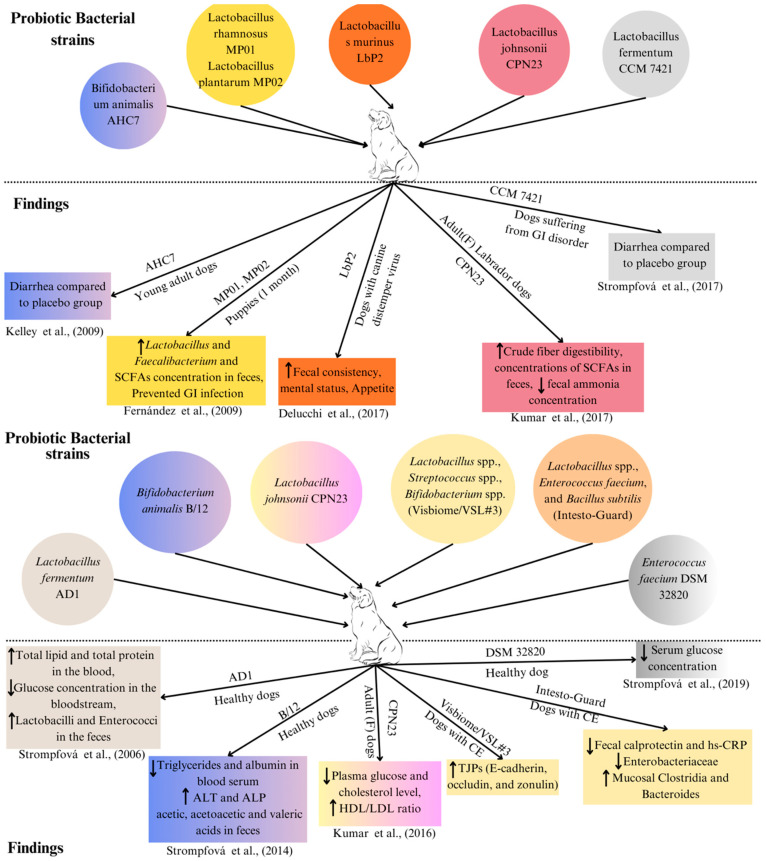Figure 4.
Experiments showing the use of bacterial strains as probiotics and their corresponding finding in the dogs. AHC7: probiotic Bifidobacterium animalis strain AHC7 [111,130]; MP01: Lactobacillus rhamnosus MP01; MP02: Lactobacillus plantarum MP02 [131]; LbP2: probiotic Lactobacillus murinus LbP2 [132]; CPN23: Lactobacillus johnsonii CPN23 [133]; CCM 7421: probiotic Lactobacillus fermentum CCM 7421 [134]; GI: gastrointestinal; HDL: high-density lipoprotein; LDL: low-density lipoprotein; ALT: alanine transaminase; ALP: alkaline phosphatase; AD1: Lactobacillus fermentum AD1 [135]; B/12: Bifidobacterium animalis B/12 [136]; CE: chronic enteropathy; Visbiome/VSL#3: Lactobacillus plantarum DSM 24730, Streptococcus thermophilus DSM 24731, Bifidobacterium breve DSM 24732, Lactobacillus paracasei DSM 24733, Lactobacillus delbrueckii subsp. bulgaricus DSM 24734, Lactobacillus acidophilus DSM 24735, Bifidobacterium longum DSM 24736, and Bifidobacterium infantis DSM 24737 [54]. TJP: tight junction protein; hs-CRP: high-sensitivity C-reactive protein; DSM 32820: Enterococcus faecium DSM 32820 [137]. The upwards arrow (↑) represents “increase” and the downwards arrow (↓) represents “decrease”.

